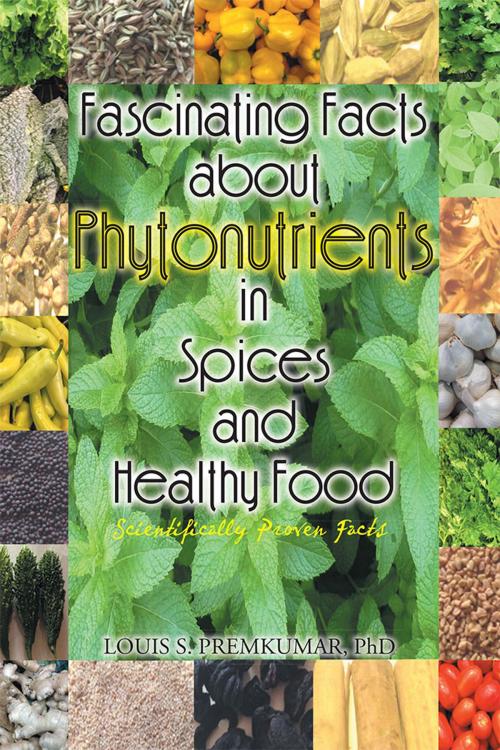Fascinating Facts About Phytonutrients in Spices and Healthy Food
Scientifically Proven Facts
Nonfiction, Health & Well Being, Health, Nutrition & Diet, Food Content Guides, Healthy Living| Author: | Louis S. Premkumar | ISBN: | 9781493150021 |
| Publisher: | Xlibris US | Publication: | March 25, 2014 |
| Imprint: | Xlibris US | Language: | English |
| Author: | Louis S. Premkumar |
| ISBN: | 9781493150021 |
| Publisher: | Xlibris US |
| Publication: | March 25, 2014 |
| Imprint: | Xlibris US |
| Language: | English |
For centuries, there have been claims that healthy food garnished with exotic spices and condiments provides vital nutrients that help ward off diseases, especially preventable diseases such as diabetes and heart disease (hypertension, coronary artery disease) and promote longevity. The purpose of writing this book is to update the public about the health benefits of ingredients (phytochemicals) in spices and healthy food using existing scientific evidence. The ultimate proof of health benefits will be deciphered by the isolation and identification of specific phytochemicals acting on specific receptors in the body exerting their biological effects. The important point being emphasized is that if the physiological effect of an ingredient is glaring, it is considered to elicit a significant response. However, when the effect of an ingredient is significant, yet the effect is not readily perceivable then the usefulness goes unnoticed and can be questioned as a myth. For example, coffee has several ingredients, but only caffeine acting on the adenosine receptors stimulates the central nervous system and promotes wakefulness. Similarly, the specific active ingredient in hot chili pepper, capsaicin, activates a member of a recently identified family of receptors called transient receptor potential (TRP) channels. TRP vanilloid 1 (TRPV1), which is involved in certain modalities of pain, promotes the release of hormones in the gastrointestinal (GI) tract. Although, the bioavailability of the active ingredients is low, it is important to realize that these ingredients can cause significant local effects in the GI tract by preventing cholesterol regeneration by subduing microbiota, inhibiting precancerous growth by promoting calcium influx and stimulating nerve endings to transmit information and to release of gut hormones that are involved in regulating a variety of functions including appetite and satiety.
For centuries, there have been claims that healthy food garnished with exotic spices and condiments provides vital nutrients that help ward off diseases, especially preventable diseases such as diabetes and heart disease (hypertension, coronary artery disease) and promote longevity. The purpose of writing this book is to update the public about the health benefits of ingredients (phytochemicals) in spices and healthy food using existing scientific evidence. The ultimate proof of health benefits will be deciphered by the isolation and identification of specific phytochemicals acting on specific receptors in the body exerting their biological effects. The important point being emphasized is that if the physiological effect of an ingredient is glaring, it is considered to elicit a significant response. However, when the effect of an ingredient is significant, yet the effect is not readily perceivable then the usefulness goes unnoticed and can be questioned as a myth. For example, coffee has several ingredients, but only caffeine acting on the adenosine receptors stimulates the central nervous system and promotes wakefulness. Similarly, the specific active ingredient in hot chili pepper, capsaicin, activates a member of a recently identified family of receptors called transient receptor potential (TRP) channels. TRP vanilloid 1 (TRPV1), which is involved in certain modalities of pain, promotes the release of hormones in the gastrointestinal (GI) tract. Although, the bioavailability of the active ingredients is low, it is important to realize that these ingredients can cause significant local effects in the GI tract by preventing cholesterol regeneration by subduing microbiota, inhibiting precancerous growth by promoting calcium influx and stimulating nerve endings to transmit information and to release of gut hormones that are involved in regulating a variety of functions including appetite and satiety.















